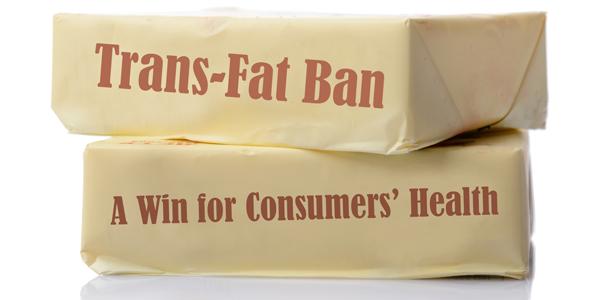
Health Canada has officially started the ban on artificial trans-fats from the food supply as of Monday September 17 2018. This ban was a long time in the making considering our extensive knowledge of how trans-fats are bad for our health. The food industry will have a grace-period of 2 years (until 2020) to fulfill the requirements of the new legislation. What does this mean for us consumers? Before we answer that, let’s do a quick review of trans-fats.
Trans-fats are one of the four types of fat that we find in our food. They are found naturally in very small amounts in meat and dairy products. Most trans-fats are made during food processing when liquid vegetable oil is changed to solid form. An example would be changing soft tub margarine into a hard stick. The food industry brought trans-fats into the food supply in the early 1900s because they add texture, taste and prevent foods from spoiling as quickly. So far so good, right?
There's more.
Foods containing trans-fat from food processing tends to be a less healthy choice. Examples include:
- Commercially baked goods
- Hard (stick) margarine
- Frozen, ready-to-go meals
- Deep fried foods
These man-made trans-fats are harmful to our bodies. They can cause our bad cholesterol to go up and lower our good cholesterol. This increases our risk for heart disease and strokes. With the food industry’s main goal to make food taste great so that we buy their products, our health takes a toll. This is why Health Canada has made the move to remove it from our shelves and give the public one less thing to worry about.
But why not remove them all at once? Why wait 2 years? Well, considering the size of the food industry and the extensive use of trans-fats in our food, it will take some time for these changes to happen across the nation. Health Canada will continue to allow foods with trans-fats to be sold within the two next years provided they were manufactured before the September 17 2018 ban date. In other words, the food industry can no longer manufacture foods with trans-fats, but food already produced and on the shelves can still be sold.
In the meantime, you can continue to stay alert by reading the nutrition facts table on food packaging. The easiest thing to do is to choose options that list the lowest grams of trans-fat on the label. Better yet, choose 0 g trans-fat products.
The Canadian Food Inspection Agency will be monitoring and enforcing the trans-fat ban through inspections, audits and sampling of manufactured goods. So, you should start to see fewer products with trans-fats as an ingredient over the next couple of years.
Personally, I think this is a win for public health. We will soon have one less artery-clogging ingredient to have to worry about when buying food. What do you think?
Interested in learning more about the trans-fat ban? Check out Canadian Ban on Trans Fats Comes into Force Today
For more information on nutrition-related topics visit our Healthy Eating page

